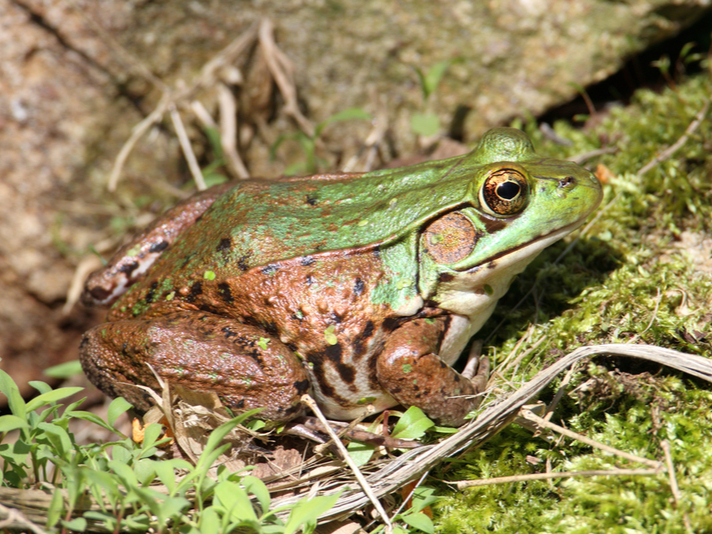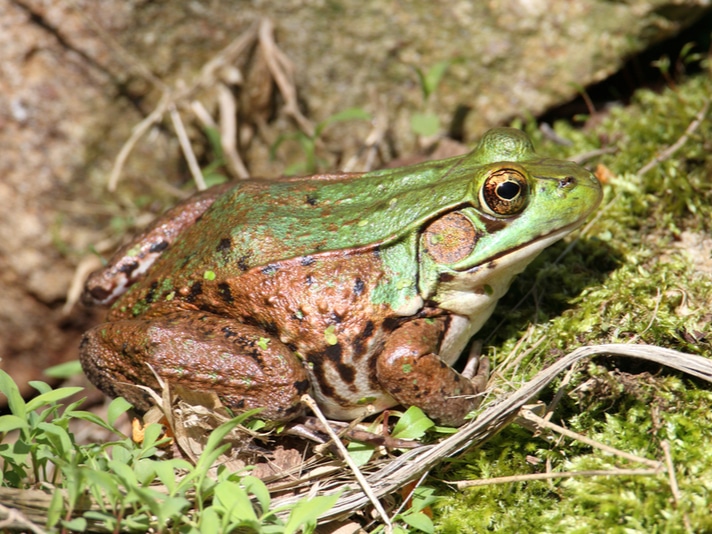Estrogenic wastes are altering the sexuality of green frogs
A study of green frogs (Rana clamitans) in ponds in suburban Connecticut found that there are larger proportions of female frogs to males, and estrogenic wastes from naturally occurring plants and perhaps agricultural runoff and sewage systems may be playing a role in this uneven sexual orientation. The study, published in the September 7 Journal Proceedings of the National Academy of Sciences, was led by Max Lambert, a doctoral student at the Yale School of Forestry and Environmental Studies and Yale University researcher David Skelly.

Steve Byland/Shutterstock
Frog populations in forest areas contained lower populations of females while those areas that were closer to suburbs had higher populations.
The study looked at frog populations in 21 ponds in Connecticut, including some ponds that were connected to septic systems and sewer lines, and found that frog populations in forest areas contained lower populations of females while those areas that were closer to suburbs had higher populations of female green frogs, suggesting that estrogenic wastes from suburbia are directly affecting the sexual orientation of the frogs, and perhaps other animals that come in contact with these waters.
Study author Lambert also found in surprising that naturally occurring estrogen in certain plants, including clovers and other plants found on suburban lawns may be playing a role in the sex change. They speculate that the estrogen is coming from these lawns and septic and sewage systems, but they haven’t determined yet what the source was.
“This shows that endocrine disruption is a much more diverse phenomenon than we previously realized,” Lambert told Newsweek. Studies have shown that Atrazine, a pesticide used in agriculture, chemically alters the reproductive organs in male frogs.
The study did find traces of estrogenic chemicals that occur naturally in human excrement but did not find any synthetic estrogens such as what are found in birth control pills.
John B. Virata keeps a western hognose snake, a ball python, two corn snakes, a kingsnake, and two leopard geckos. His first snake, a California kingsnake, was purchased for $5. His first pet reptile was a green anole that arrived in a small box via mail order. Follow him on Twitter @johnvirata



